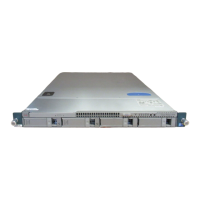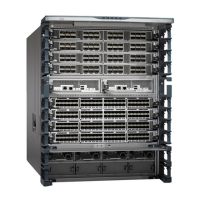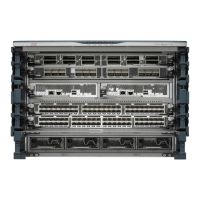© 2013 Cisco and/or its affiliates. All rights reserved. This document is Cisco Public Information. Page 24 of 48
Note: It is highly recommended that user adds only the management pNIC to the Cisco Nexus 1000V while
moving the management NIC behind the VEM. Other pNICs can be added to the Cisco Nexus 1000V after the
module successfully attaches to the VSM
1. Mark the virtual Ethernet port profile as a system port profile:
switch# configure terminal
switch(config)# port-profile type vethernet AccessProfile
switch(config-port-prof)# no shutdown
switch(config-port-prof)# state enabled
switch(config-port-prof)# system port-profile
switch(config-port-prof)# publish port-profile
switch(config-port-prof)# end
2. Mark the network segment as a system network segment.
switch(config)# nsm network segment VMNetwork1
switch(config-net-seg)# switchport access vlan 100
switch(config-net-seg)# member-of network segment pool InternalSF
switch(config-net-seg)# system network segment
switch(config-net-seg)# publish network segment
switch(config-net-seg)# exit
3. Mark the uplink network as a system uplink network.
switch(config)# nsm network uplink Channel
switch(config-uplink-net)# allow network segment pool InternalSF
switch(config-uplink-net)# system network uplink
switch(config-uplink-net)# publish network uplink
Note: The topology shown here, moving the management NIC behind the Cisco Nexus 1000V, is a supported
configuration. However, this is not a recommended topology for this release. This recommendation is consistent
with Microsoft’s recommendation that management, storage, live migration, and cluster traffic go directly to the
pNIC whenever possible.

